Landowners Create New Access Opportunities in South Carolina
In more than half of American states, at least 90% of the land is privately owned. Many of these states are in the Southeast, and without personally owning property or having connections to friends and family that do, many hunters in these states would never have access to land to hunt. Luckily, more than 30 programs in at least 25 states provide incentives to landowners to open their properties to public hunting access. These programs go by a variety of names, and have various regulations, application systems, funding streams, and ways to gain permission from the landowner. Last month, we highlighted Montana’s Block Management program, which recently celebrated its 25th anniversary.
This month, we look to one state that doesn’t have an agency-run landowner incentive program. In South Carolina, the interest in hunting is high with roughly 200,000 residents and non-residents purchasing licenses, but the places hunters can harvest deer, dove, duck, and turkey are limited. The South Carolina Wildlife Partnership (SCWP) is a non-governmental organization that partners with the South Carolina Department of Natural Resources (DNR) to provide more hunting opportunities around the state. Though only a few years old, the partnership is growing rapidly and demonstrates how a nonprofit can lead the charge to connect willing landowners and hunters, conserve and restore wildlife habitat, and provide educational opportunities for youth hunters, all through one program.
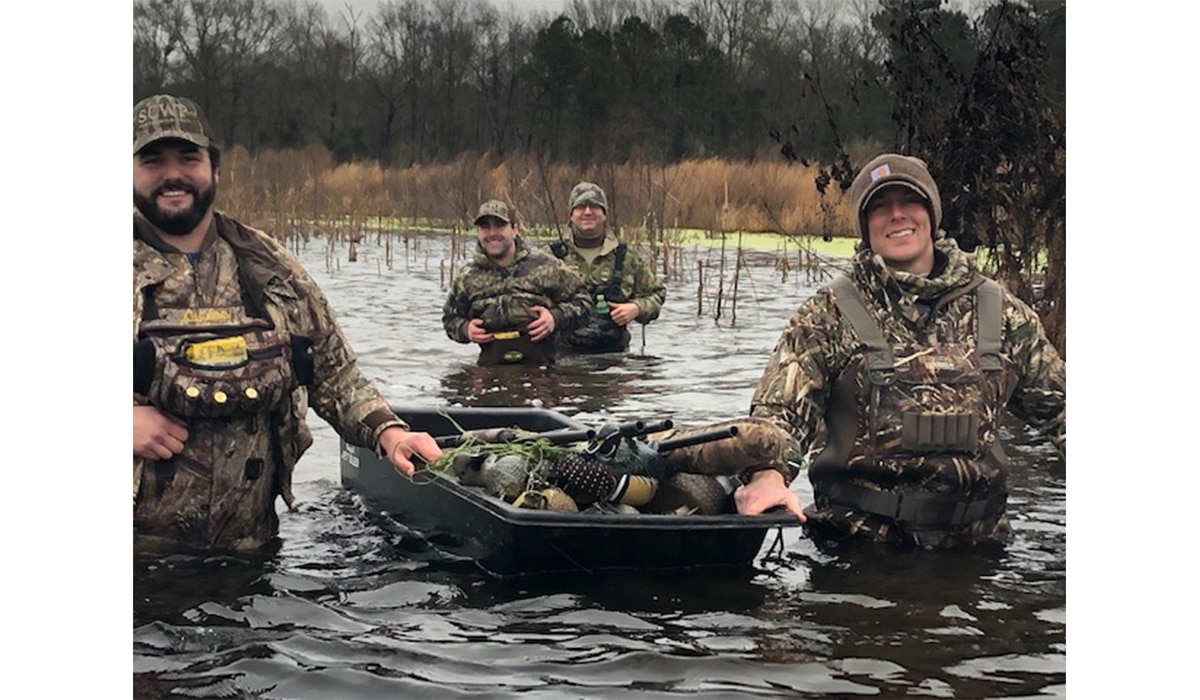
Our Access Advocacy Manager, Lisa Nichols, had a video chat with Ed Paul, the Executive Director of SCWP, to learn how the program got started and where it’s headed.
Lisa: What is the history of the South Carolina Wildlife Partnership and what is your role there?
Ed: SCWP started in 2017. It all stemmed from our Chairman, Mr. Johnny Evans. He served as chairman of South Carolina’s Department of Natural Resources Board for many years, and saw firsthand the long wait times for public hunters who put in for lottery draw hunt systems with DNR. It always stuck with him that there were so many more people out there that wanted to hunt, but just didn’t have the opportunity or the place to go. That was something we needed to change or we’d lose the hunting tradition in society. So, Johnny formed a board that was geographically represented from all over the state and included landowners who were influential in their communities, along with other outdoorsmen and women who could really make a difference in their locations.
When I was hired December 1, 2018, as the Executive Director and met all the board members, it was incredible to see their passion and their belief in what we’re doing. I go out and find landowners and use different connections that I’ve made through many years of hunting and fishing on private land by permission. That’s why this organization is so dear to me: because I’ve never owned a piece of land, ever. Hunting on permission by landowners who allow access definitely opened doors for me and it’s why I am where I am today.
Lisa: How do SCWP and the South Carolina Department of Natural Resources work together?
Ed: Without DNR, none of this could be possible. By partnering with them, we’re allowed to access the hunters who put in for DNR’s lottery but were not selected. When hunters go through the state application online they have a chance to opt-in with SCWP for free second-chance hunts. We’re sent the information of those who were unsuccessful but opted-in and then we do another randomized draw. Then we reach out to the people whose names were drawn and invite them on the private land hunts. It does not affect their preference points with DNR.
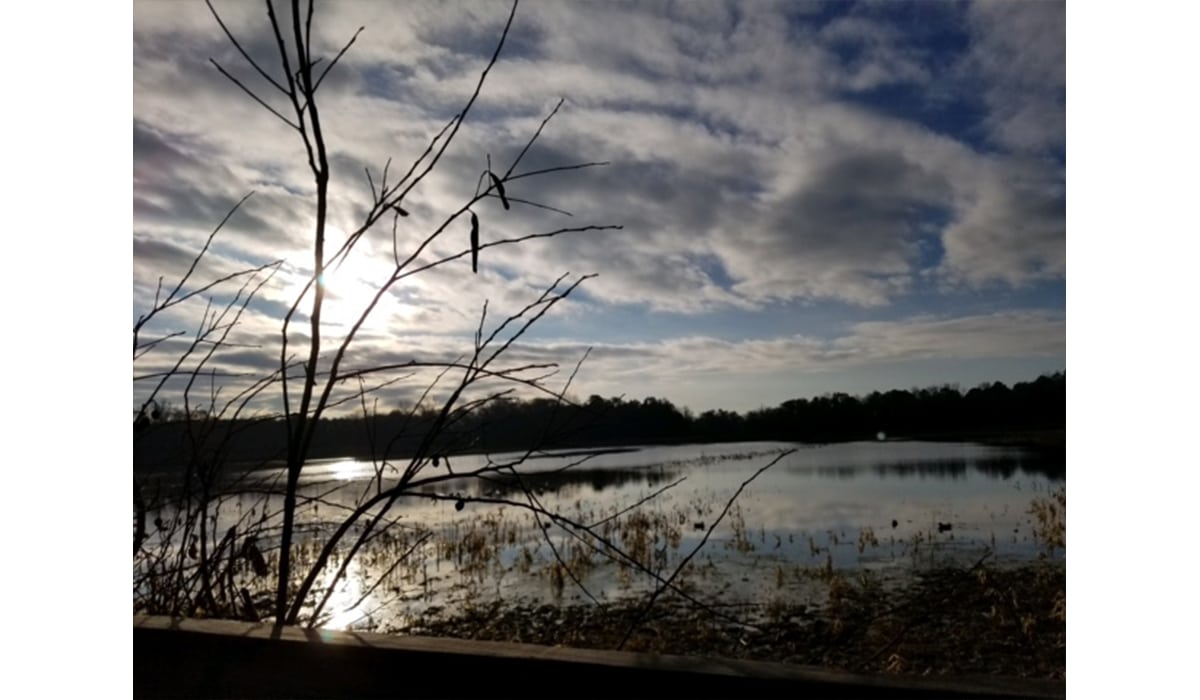
Lisa: Is this program unique nationally? Do you know of any others that function like this?
Ed: I do not. Not with the free second-chance on private lands. I know there are different public access programs that exist across the United States. The way we’re doing it with private landowners in well-manicured habitat areas for specific species is unique, and I’m hopeful this program can be replicated all over the country. There’s a system to it, and SCWP is figuring out the right ways to make it succeed here in our state where we have far more hunters than people typically think.
Lisa: You provide free, second-chance waterfowl hunts; are there other hunts available through this system?
Ed: We just got the go ahead to put the SCWP opt-in on DNR’s turkey draw lottery. So we’ll be taking turkey hunters out on private lands this season. We’ve got some great tracts that landowners are going to allow us to go on, and we’re looking to start deer next year. But currently our non-waterfowl species hunts—doves, small game, deer, turkey—we do with our Take One Make One (TOMO) program. It’s a program for youth from all over the state who have been through DNR’s hunters’ education course and have attended different hunt clinics throughout the state that DNR organizes. They’re taking kids to some great places to hunt deer, duck, and dove. That’s what it’s all about.
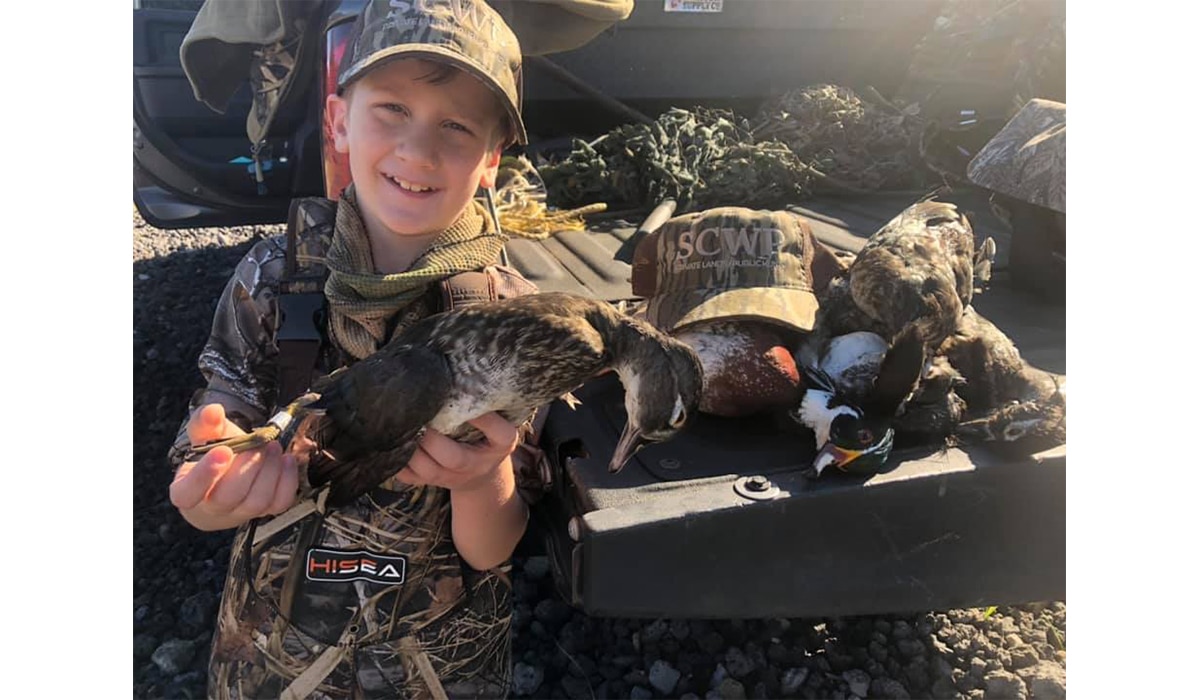
Lisa: That’s awesome, getting the next generation ready! Since 2017, what would you say has been the impact of SCWP for hunters in South Carolina?
Ed: I’ll say the overall opportunity. Since so many people put in for DNR lottery hunts, there can be a four-year wait time—or even a five-year wait time—depending on how specific someone is with the locations they’d like to hunt. Based on wait times, waterfowl was the first focus of DNR for this partnership. Opening hunting up to private properties has allowed so many more people the opportunity—and the hope to get drawn—each and every year. The first year we took out only 32 hunters. This year we took 339 waterfowl hunters that were unsuccessful with the DNR lottery, and they harvested 763 birds. It was a great ratio. And that was even in a tough year due to certain weather conditions and the pandemic. Some groups had to back out last minute, when it was too late to fill the spots. But we just had a blast taking people out and their response to it has been great.
Lisa: How do the landowners sign up? How do they get involved?
Ed: They can get involved either by contacting me or by going on our website. If they have a piece of property, there are several different ways they can get involved, be it hunting access exclusively, for a single hunt, or a few hunts throughout the year on whatever species they would like us to hunt. The demand is there for public hunters and we can connect landowners and hunters. South Carolina landowners, we’d love to meet you, come out to see your place, and provide consulting about habitat. If you’ve got any questions, we’ll help in any way we can with the partnership.
Lisa: What do you see as the benefits for the landowners in this program?
Ed: There are many benefits. One is that other property owners in the community see that they’re giving back. So the neighbors have a little sense of pride for that landowner’s property; maybe they help keep an eye out for trespassers or for people who are not picking up after themselves. And then the neighbors spread the message around the community that this landowner is giving back and providing opportunities. Also, for those who are seeking tax benefits, we are a 501(c)3 non-profit and there are market values to the things that are being offered. If a property owner sells or leases blinds or leases hunting rights, then we can provide what we believe, in our opinion, is the fair market value. It is up to the landowner to speak with their own CPA to finalize that, but we can provide research ahead of the donation. Finally, most landowners are involved because they know it’s making a difference.
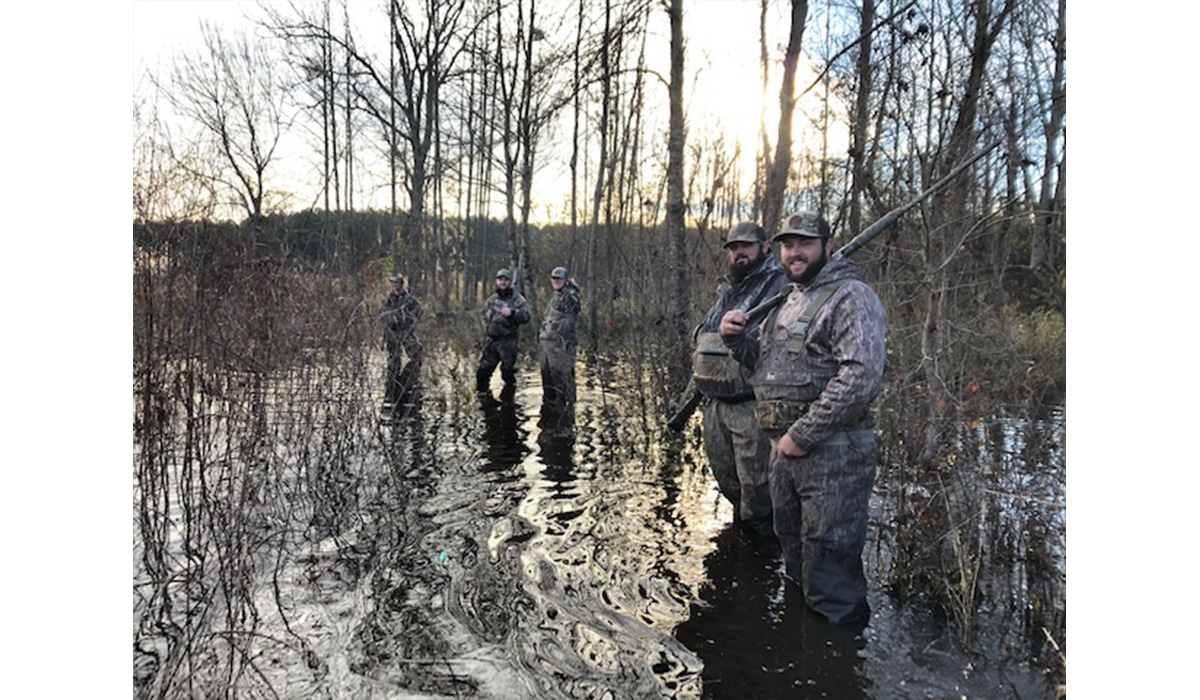
Lisa: What is the average size of the properties that are currently enrolled in the partnership?
Ed: I’d say the average is about 400 or 500 acres. When you look at the grand scheme of huge chunks of land, like out West or up North, you have much larger tracts. But we’re not measured in an amount of acreage, we’re measured by the amount of opportunities to public, whether it be on four acres or 400 acres. Here in South Carolina, more than 96% of the land is privately owned and that number is increasing every day.
Lisa: What if a landowner is interested in enrolling their property but it doesn’t provide the best waterfowl, turkey, dove, or deer habitat? Is there anything that can be done?
Ed: Yes, a lot of our fundraising goes to habitat improvement. A landowner could provide SCWP an exclusive lease to hunt their property in exchange for consulting or land management, and we may come in and revamp some things. If it’s a waterfowl habitat area we may build a dike system and an impoundment, put in water control structures, and plant it year-to-year. We fundraise to help pay for that. If we leave that property after the lease, we’re still making an impact on habitat areas and providing that conservation project.
Lisa: Do landowners have to worry about liability if a hunter gets hurt on their land?
Ed: No, we are covered. SCWP has a $1 million liability policy with another $4 million umbrella. Being partnered with DNR, we also fall into the tort liability policy, which also provides coverage. It’s a great way to approach a landowner to say they’re covered—other than for gross negligence, such as sending somebody up an old, rickety, wooden deer stand with nails sticking out. But we assess the property before the hunts begin. Plus, all our hunts have a guide, a mentor, or the property owner that goes out with the hunters. A lot of our landowners want to participate in that way.
All our youth TOMO hunts are required to have a mentor with them, whether that’s sitting on a dove stool beside them in the field or in a deer blind. All our waterfowl hunts have a trained guide that knows where to go. We don’t send people out in the dark somewhere they’ve never been!
Lisa: Do you have an estimate about how many people in this past season were first-time hunters?
Ed: There was a small percentage. We had a few female hunters that were out for their first time who harvested doves. We had about 20 youngsters come along who experienced their first hunt but weren’t shooting, and another five or six youth who were on their first dove or deer hunt.
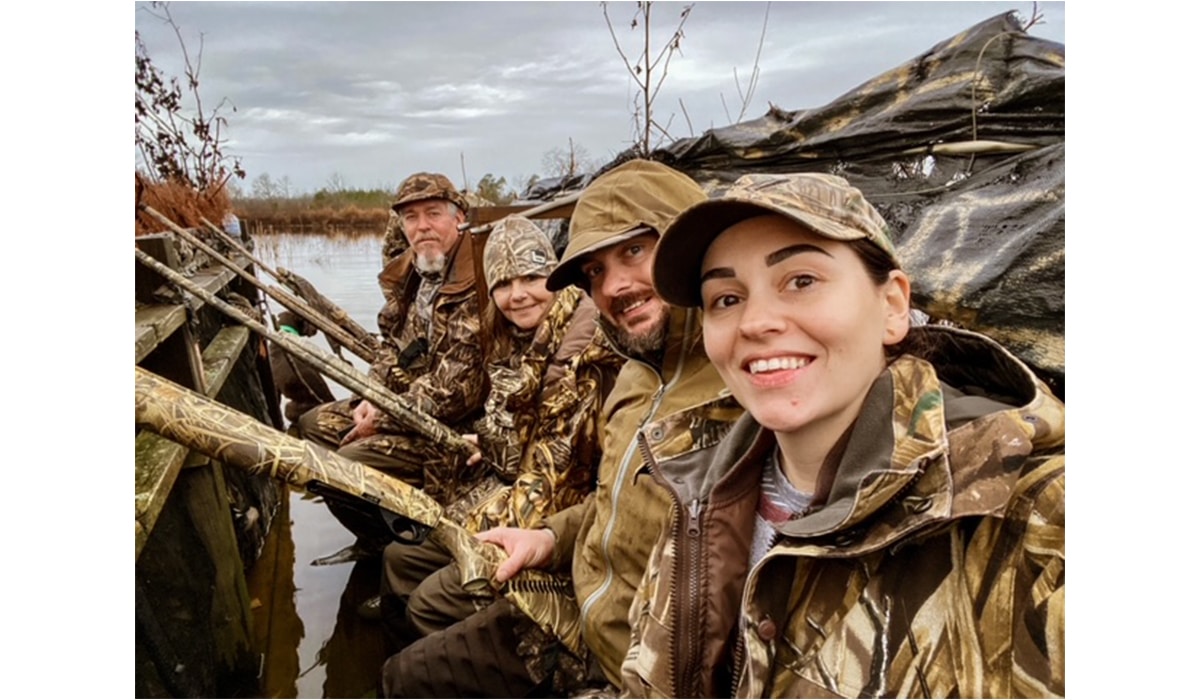
Lisa: What is something that you wish more people knew about the partnership?
Ed: This is something that can be done. It can be done all over the country. If we don’t come together as outdoorsmen and women to protect access and try to find more ways to get people outside, we’re going to lose it. I have two boys who love hunting and want to go out every day.
I would love for people to know SCWP is funded by private and individual donations. Those donors are giving towards a habitat fund to build and improve properties. They’re making donations because they believe in what we’re doing and want to see progress in the future.
Lisa: What was your journey that landed you at SCWP?
Ed: I worked for conservation organizations for about 15 years. I started with the South Carolina Waterfowl Association as the youth director at the summer camp, Camp Woodie. As a kid, I was a camper there, went on to become a counselor-in-training, and then a counselor after college. I just fell in love with the place. It was a place I could go and learn from others who love the outdoors, like I did. Being able to transition through all the different hunt programs and take so many kids on waterfowl hunts and deer hunts allowed me to see what was really important. So now I’m passing that on while also remembering all those who provided opportunities to me. Now, I’m part of a new organization sharing opportunities statewide and hopefully—someday—nationally.
Lisa: Speaking of sharing the framework of the partnership nationally, are there groups that have consulted with you about getting a program like this started in other states? Or are you focused first on expanding the program within South Carolina?
Ed: Yes, that’s on the forefront. SCWP is growing at such a brisk rate, we’re going to need to hire regional directors. Our numbers have grown significantly. We want to go to different states. I’d love to talk with Georgia, North Carolina, and other states in our region, and then spread from there. I feel like those states have a similar climate and similar species.
Lisa: Final question: what is your favorite part of the job?
Ed: Obviously not being cooped up in an office 24-7! But it’s just fun to wake up each and every day and get to go outside. I get to be in God’s country, do something I love, work towards sharing that with others, and know that it’s making a difference.
Many thanks to Ed Paul for the SCWP hunt photos.